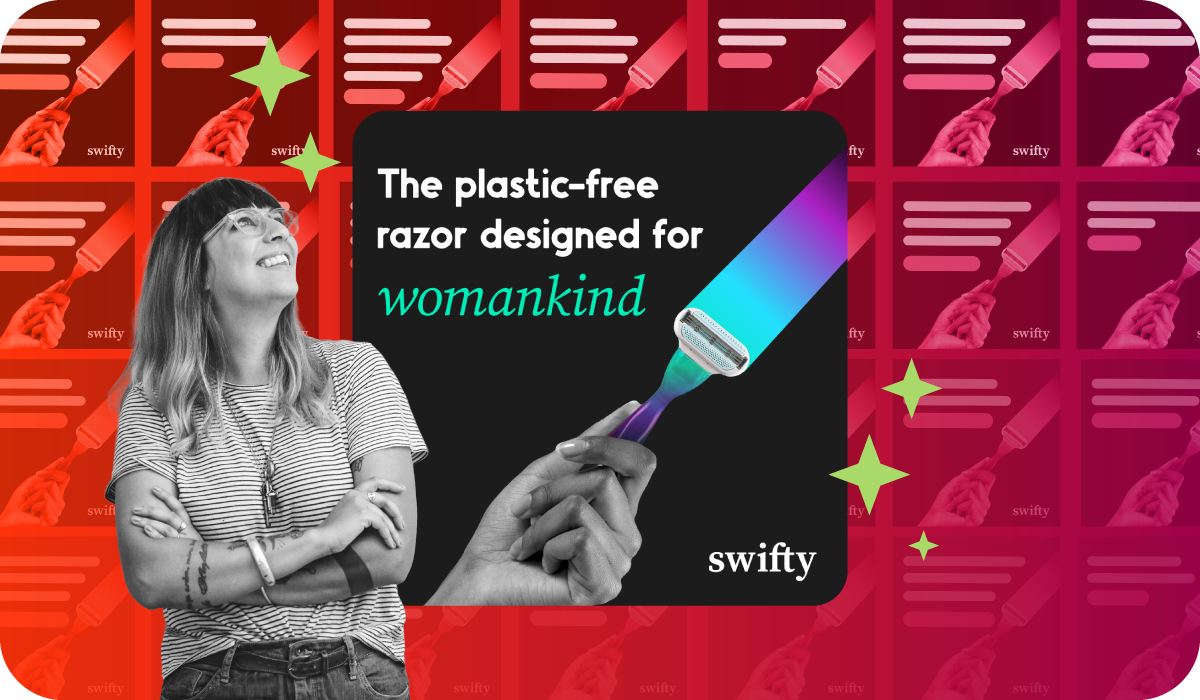Test, learn, win: how iterative testing drives market success
Market Research • Mar 27, 2025 10:00:00 AM • Written by: Keeley McManus

You’re gambling with your marketing budget right now.
That new product launch you spent months perfecting? There’s an 80% chance it’ll fail. Those campaign strategies your team debated for weeks? They’re missing the mark with your audience.
Successful brands don’t just guess what customers want—they test, learn, and adapt. The most impactful marketing and product innovations aren’t built on single strategies alone but refined through continuous experimentation. This iterative approach, often called “Test & Learn”, helps companies optimize decisions, reduce risk, and accelerate growth by validating ideas in real, everyday environments before scaling.
Orchard helps brands leverage real-world consumer behavior through iterative testing to drive more effective product launches, ad campaigns, and customer experiences. This approach transforms uncertainty into actionable insights by revealing what actually works through real-time testing and learning—allowing companies to quickly adapt before investing heavily in the wrong direction.
The innovation gamble: why most products fail
Traditional product development is a high-stakes gamble.
You invest months in development, burn through marketing budgets, and hope consumers will respond positively. And the odds aren’t in your favor.
The numbers tell a sobering story: More than 30,000 products are launched every year and 80% of them fail, according to Harvard Business School professor, Clayton Christensen. Harvard Business Review also found that 75% of CPG and retail products don’t even reach $7.5 million in first-year sales. This happens partly because consumers are creatures of habit—they stick with what they know unless something truly compelling captures their attention. Yet despite massive investments in market research and data analytics, most products still fail, revealing a disconnect in how we understand consumer behavior.
This disconnect stems from an industry-wide challenge. Many brands rely heavily on data-driven decision-making to minimize risk, often at the cost of creativity. While analytics are essential, “the obsession with data has led to an industry that measures everything but means nothing,” as Flavilla Fongang explains in Adweek. This data-first mindset prioritizes cost-cutting and performance metrics while sacrificing what resonates with consumers.
Through iterative testing, we move beyond one-and-done decisions to continuously test, learn, and gather insights to evolve our understanding of consumer behavior. Instead of making costly, all-or-nothing bets on a single launch or campaign, brands can adopt Test & Learn mindsets that balance creative innovation with data-driven validation. By continuously experimenting, analyzing real-world feedback, and refining messaging or product strategy, we can improve outcomes over time—delivering campaigns and products that don’t just perform but genuinely click with consumers.
Key benefits of Test & Learn
To capture true consumer intent, brands, and insights teams must rethink their approach. Here’s how:
Minimize risk, maximize learning
Rather than launching and hoping for the best, brands can validate ideas early through small-scale experiments that provide valuable learning opportunities:
- Coca-Cola uses a test-learn-scale approach, launching new products in select markets to gather real-time consumer insights. This targeted strategy ensures products are refined and optimized before scaling globally, leading to smoother launches across multiple regions.
- Spotify leverages A/B testing to optimize their user engagement by refining personalized recommendations and content features. By segmenting users and testing everything from search functionality to playlist recommendations, they identified exactly what keeps users engaged. The result? A more personalized, intuitive experience that boosts satisfaction, engagement, and retention in a fast-evolving streaming market.
Takeaway: Small-scale testing creates a safety net for innovation, turning potential failures into valuable learning opportunities before significant resources are committed—building an organizational knowledge base that improves future decisions.
Faster speed to market
Instead of waiting for a "perfect" solution, Test & Learn enables incremental improvements that shorten product and campaign development cycles:
- Amazon is redefining speed to market by integrating AI, robotics, and smart logistics into its fulfillment process. From drone deliveries to smart glasses for drivers, Amazon continuously finds faster ways to deliver, reduce costs, and boost customer satisfaction. This encourages consumers to return for their everyday needs, keeping Amazon ahead of its competitors.
- Unilever scales agile practices company-wide, prioritizing clear objectives, regular reviews, and dedicated cross-functional teams. By focusing on key priorities and fostering a culture of empowerment, this streamlined approach enables quicker market responses, faster product development, and continuous improvement.
Takeaway: Iterative testing allows companies to launch, learn, and improve continuously—creating a competitive edge through speed while still delivering quality that meets customer expectations.
Optimize marketing performance
Marketing often operates as a black box, where decisions are made with limited data. However, brands that systematically test their creative, messaging, and media strategies outperform those that rely on gut instincts alone:
- Google reserves 20-30% of every campaign budget for testing, ensuring its marketing strategies are continuously refined through experimentation. This commitment shows the importance of systematic testing for improving ad performance and driving long-term growth.
- Netflix boosts engagement with A/B testing of personalized thumbnails. By testing which visuals drive more clicks and tailoring them to viewer preferences, Netflix’s data-driven approach improves user interaction which maximizes content engagement and optimizes the user experience.
Takeaway: A culture of experimentation leads to higher engagement, better ROI, and lower wasted spend—turning marketing from a creative guessing game into a science without sacrificing creative impact.
Customer-centric decision making
Consumers don’t always behave as expected. Test & Learn puts real customer responses at the heart of decision-making, minus the guesswork:
- P&G puts the consumer at the center of its innovation by tapping into real-time data from appliances with sensor technology, such as dishwashers. This data allows them to analyze consumer habits and improve everyday experiences—like developing a no-rinse dishwasher detergent that cleans more effectively while using less water and energy. By leveraging this real-world, real-time data, P&G can quickly test and refine products to meet consumer needs.
- Facebook uses A/B testing to refine its ad strategies by focusing on real user behavior. By testing variables like audience segments, ad images, and placements, Facebook tailors its ads based on what users engage with. This iterative approach allows Facebook to continuously improve its content, enhance user experience and drive better engagement.
Takeaway: Real-world testing puts customer behavior at the center of innovation—ensuring products and campaigns genuinely resonate with audiences rather than relying on guesswork or assumptions about what should work.
How to build a Test & Learn culture
- Start small, scale what works: Don’t dive in headfirst. Start with low-risk, controlled experiments that target specific questions. Set clear success metrics upfront and use these benchmarks to determine which initiatives deserve a larger-scale launch. Coca-Cola’s market-by-market approach is a great example: test in limited markets first, then expand only what shows measurable success.
- Leverage real-time data for a full picture: Numbers tell part of the story, but combining them with direct customer feedback reveals the complete picture to understand what customers do and why they do it. Spotify and Netflix shine in merging behavioral insights with real-time feedback, revealing patterns and preferences single-source data misses. This multi-dimensional approach captures the reasoning behind consumer decisions, not just their actions, leading to more meaningful innovation.
- Create a continuous learning loop: Document what works, what doesn’t and why. Keep all these learnings in one place that’s accessible for the entire team to continuously iterate on ideas, develop, and refine for future tests. This helps you make sure that each experiment is part of an ongoing process.
- Foster a culture that embraces experimentation: Create an environment where curiosity thrives. Encourage teams to challenge assumptions and provide them with the resources to test them. The companies that excel at this approach don't hide failures—they share them openly so everyone can learn. When both successes and failures are valued as learning opportunities, experimentation becomes second nature.
- Leverage technology to accelerate insights: Tech giants like Amazon and P&G aren’t just testing more—they’re testing smarter. By leveraging technology to handle time-consuming tasks, like reporting, data collection, and analysis, teams can focus on interpreting results and making strategic adjustments. Technology doesn’t just speed up the testing cycle—it amplifies the impact of each test.
The future belongs to the experimenters
The most successful organizations don’t just test occasionally—they make experimentation a core part of their foundation. They test, they learn, they adapt—and they get closer to success with every experiment. This continuous, iterative testing becomes their greatest competitive advantage.
Test & Learn is more than a methodology—it’s a mindset.
Through Orchard’s in the wild testing, we capture real-time consumer behavior, turning insights into actionable strategies that evolve as you do, minimizing risk while maximizing insights.
Don’t leave success to chance—turn insights into impact. Start testing smarter with Orchard today.
Keeley McManus
Keeley is the Client Strategy & Insights Manager at Orchard, constantly working closely with our partners to ensure that their research produces actionable results and insights. With a deep foundation in consumer behavior, her experience spans across both the physical store shelves and digital space. A drive to answer the question of what consumers will actually do versus what the assumed behavior might look like is what first caught (and held) her attention about Orchard over three years ago. In our increasingly digital world, she's found that Orchard provides a POV to partners that is more and more relevant by the day.
